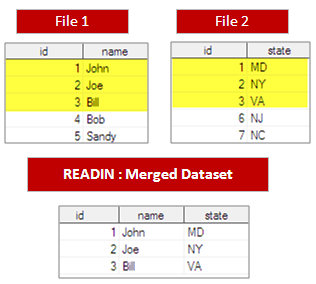

Which package is generally used for fast data manipulation on large datasets? Some frequently used methods are listed below -Įnd.time - start.time With tictoc packageģ2. There are multiple ways to measure running time of code.
#Listen data sas interview questions how to
How to measure execution time of a program in R? In the example below, we are figuring out the row number wherein the maximum value of a variable x is recorded.Ĭomb2 = sqldf('select * from df1 join df2 ')ģ0. The which() function returns the position of elements of a logical vector that are TRUE. What is the use of which() function in R? The rename() function in dplyr package can also be used to rename a variable.ġ6. In the example below, we are renaming variable var1 to variable1.Ĭolnames(df) <- 'variable1' The group_by() function in dply package can perform the same task.ĭf %>% group_by(var1)%>% summarise(mean(var2)) With(df, by(df, var1, function(x) mean(x$var2)))

In the example below, we are computing mean of variable var2 by a factor var1.ĭf = ame(var1=factor(c(1,2,1,2,1,2)), var2=c(10:15)) It is used to perform calculation by a factor or a categorical variable. The by() function is equivalent to group by function in SQL. The with() function is equivalent to pipe operator in dplyr package.
#Listen data sas interview questions code
Using with() function, you can refer your data frame and make the above code compact and simpler.

Most of the R programmers write like code below. You are asked to perform this calculation : (x+y) + (x-y). What is the use of with() and by() functions? What are its alternatives? TRUE FALSE NULL Inf NaN NA NA_integer_ NA_real_ NA_complex_ NA_character_Ī variable name can have maximum to 10,000 bytes.ġ4. If else repeat while function for in next break var1 is valid.Ī variable name cannot have reserved words. A variable name can start with either a letter or the dot followed by a character (not number).Ī variable name such as. Tutorial : dplyr Tutorial with 50 ExamplesĪ valid variable name consists of letters, numbers and the dot or underline characters. The bind_rows() function from dplyr package can be used to combine data frames when number of columns do not match. The data frame df has 2 columns and df2 has only 1 variable. For example, we have two data frames df and df2.

When the number of columns in datasets are not equal, rbind() function doesn't work to combine data by rows. How to combine data by rows when different number of columns? If names of columns would not be same, wrong data would be appended to columns or records might go missing.ġ2. While using rbind() function, make sure both the number and names of columns must be same. This book puts the interviewee in the driver’s seat and helps them steer their way to impress the interviewer.While using cbind() function, make sure the number of rows must be equal in both the datasets. Rather than going through comprehensive, textbook-sized reference guides, this book includes only the information required immediately for a job search to build an IT career. SAS Programming Guidelines Interview Questions You’ll Most Likely Be Asked is a perfect companion to stand ahead above the rest in today’s competitive job market.


 0 kommentar(er)
0 kommentar(er)
